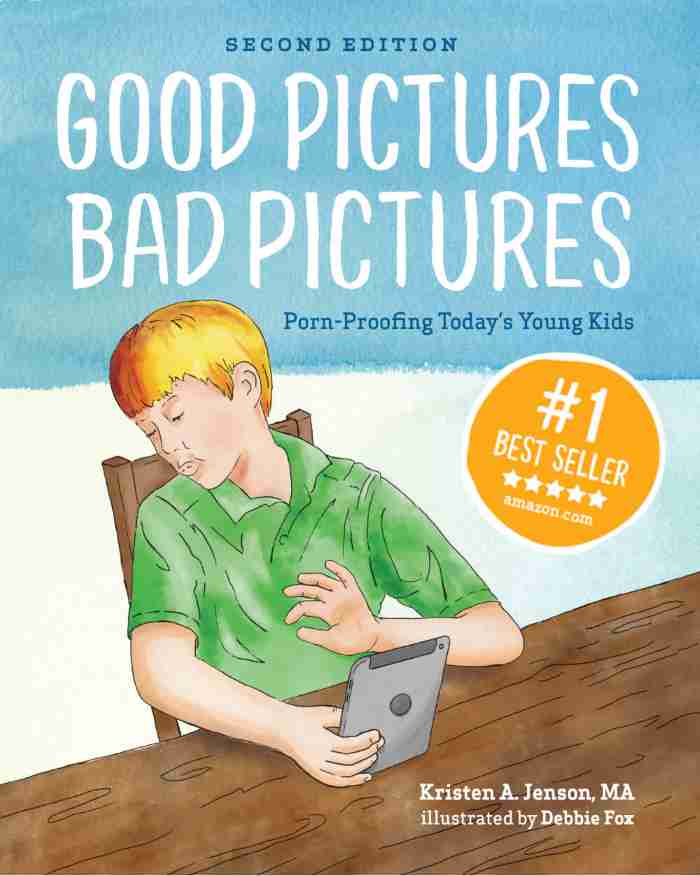

Gender and Childhood Pornography Exposure: New Research Reveals Surprises!

Are boys and girls impacted by pornography in the same way? This is a question everyone wants answered.
But studying childhood pornography exposure is challenging for several reasons:
- Researchers do not ever want to cause harm to those being studied and children are considered a vulnerable population. Researchers don’t want to create trauma for kids by bringing up painful memories without proper psychological support.
- Asking a child’s parents whether or not a child has been exposed to pornography will not produce accurate data because many parents are not aware when children are exposed.
- It’s difficult gaining legal access to children.
Yet childhood pornography exposure is too important of a topic to be ignored.
As a Behavioral Science student at Utah Valley University, I led a team that completed an exploratory internet-based survey in December 2015. In order to find data on childhood, we asked adults who had been exposed to pornography as kids to answer questions.
Who participated?
- 238 women and 132 men responded to our survey.
- The participants were from 17 countries and 41 states.
- The average age was 35.7 years.
- 90% of respondents were Christian.
What answers were we seeking?
We wanted to explore gender differences in the following questions:
- How are children are exposed to pornography?
- What emotions did they feel during initial exposure?
- How long did they wait to disclose exposure?
Our team also wanted to figure out how often other children are part of the initial exposure. Some of the results surprised us.
[[CTA]]
Research results
Average age of exposure
The average age of exposure for this study was at 9.66 years old for girls, and at 9.95 years old for boys.
The circumstances of initial exposure
Very few children intentionally sought out pornographic materials: girls: 7% | boys: 10%
One or more additional children were involved: girls: 48% | boys: 49%

In other words, most initial exposure was accidental for both boys and girls. Furthermore, nearly half of the kids in our study were around at least one other child during their initial exposure to pornography. Children are showing other kids pornography and/or they are watching this happen.
Our team calls this phenomenon the clubhouse effect. When children discover pornography, they often show their peers. While they may be afraid to tell adults what they have seen, kids confide in their friends.
Childhood pornography exposure breeds further childhood pornography exposure. There is an urgent need to teach kids not to show what they find to their friends or siblings. Kids need to know that no one should show them pornography and that they should never show it to other children.
How long did it take for children to disclose exposure?
Only a small portion of children disclosed on the same day the initial exposure occurred: girls: 9% | boys: 7%
If children did not disclose on the same day, chances of talking to anyone before adulthood went down substantially. Girls were almost twice as likely to have never disclosed (27%).
Overall, 31% of our participants report they have never told anyone about their childhood exposure.

Gender similarities and differences in feelings
Girls reported feeling higher levels of many negative emotions measured, including discomfort, embarrassment, or confusion. Girls were also more likely to feel a sense of it was weird.

Boys reported higher levels of curiosity, the feeling of being pulled, or feeling a need to find more materials.

Other significant findings
- Boys were much more likely to experience sexual arousal (almost 80%) than girls (45%).
- There was no significant difference in shame for arousal between boys and girls. (Around 50% for both.)
- Boys were almost three times more likely to have felt excited by what they saw.
- 32% of study participants reported seeking out 6 or more forms of pornographic materials since initial exposure.
- Nearly 80% of children went back for more pornography. Boys most often went back within 6 months. Girls, for the most part, did not go back until 3 years later, right around puberty.
Looking back in time
A challenge to our research was best described by Kristen A. Jenson, author of Good Pictures Bad Pictures: Porn-Proofing Today's Young Kids. She said, “It’s like we are looking at light from stars light years away. It's old data. We need to know what is happening now.”
She’s right. The pornography exposure events we studied happened an average of 25 years ago. We really need to know what is happening with kids today. Nearly all of our participants were children before Wi-Fi and handheld devices were part of everyday life. If the average age of exposure was under ten 25 years ago, what would it be today?
We still have much to study and much to learn.
The future
I have been asked what is next for our team. More research needs to be conducted to further understand some of our findings. We are interested exploring how exposure may affect childhood, future romantic relationships, self-concept, perfectionist tendencies, sexuality, and life in general.
We want to understand the differences in how long-term usage may affect boys and girls distinctly, if those differences exist. If they do, treatment for those who consider themselves addicted or otherwise harmed by pornography usage may need to be handled based on gender.
Our team plans to address some of these questions, and we hope more organizations will pick up the reigns as well. Whatever the effect, pornography is too much a part of our world to not be taken seriously. It is time to combine efforts and get some real answers for our sons and daughters.


Good Pictures Bad Pictures
"I really like the no-shame approach the author takes. It's so much more than just 'don't watch or look at porn.' It gave my children a real understanding about the brain and its natural response to pornography, how it can affect you if you look at it, and how to be prepared when you do come across it (since, let's face it... it's gonna happen at some point)." -Amazon Review by D.O.








